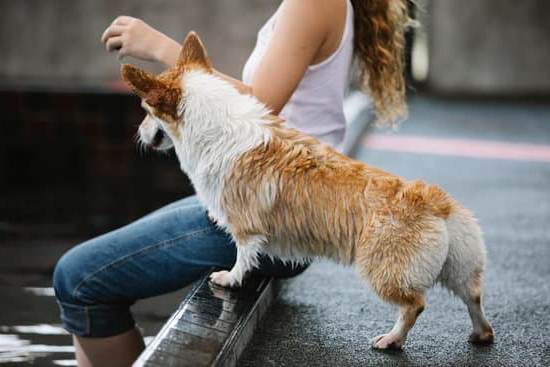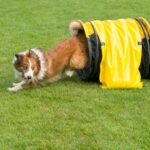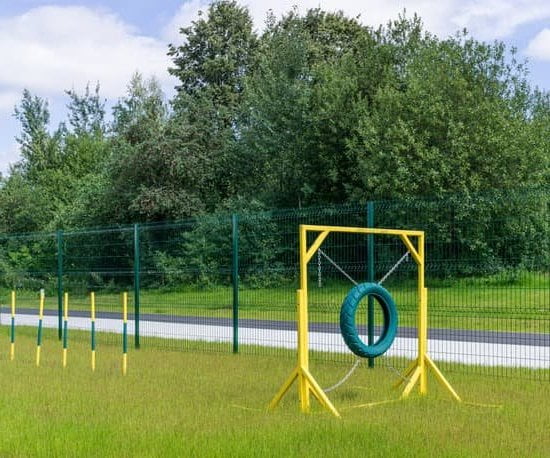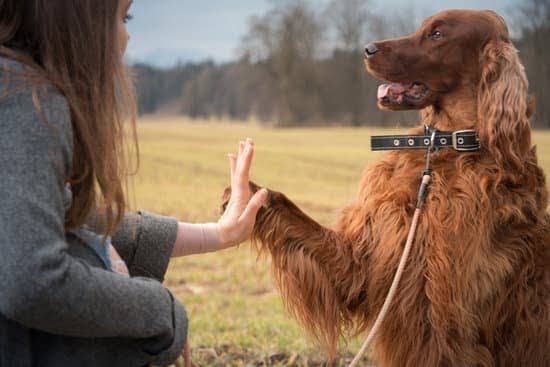Training a dog that is both deaf and blind can present unique challenges for pet owners. However, with patience, understanding, and the right approach, it is possible to effectively communicate and train these special companions. In this guide on how to train your dog who’s deaf and blind, we will explore the strategies and techniques that can help bridge the communication gap and build a strong bond with your furry friend.
Dealing with a deaf and blind dog requires a different set of skills compared to training a dog with full sensory capabilities. It is essential to first assess your dog’s specific needs and capabilities before embarking on any training program. Understanding their limitations will allow you to tailor your approach to suit their individual requirements, ensuring a positive and effective training experience for both you and your pet.
Creating a safe and familiar environment plays a crucial role in training a deaf and blind dog. By providing consistency, using touch and scent cues, establishing routines, and offering positive reinforcement, you can help your canine companion navigate their surroundings confidently. Building trust through communication tailored to their unique circumstances is key to fostering a strong bond with your four-legged friend.
Assessing Your Dog’s Needs and Capabilities
Training a deaf and blind dog comes with its own set of challenges, but it is not impossible. The first step in this process is to assess your dog’s specific needs and capabilities. Understanding how your dog perceives the world without sight and sound will help you tailor your training methods to suit their individual requirements. Every dog is unique, so taking the time to observe and learn about your pet is crucial in successfully training them.
One important aspect to consider when assessing your dog’s needs is their level of sensitivity to touch and scent. Deafblind dogs heavily rely on these senses to navigate their environment and communicate with their owners.
By understanding what triggers a positive response in your furry friend, you can use touch cues, such as gentle strokes or taps, along with specific scents to create a form of communication that your dog can easily understand. This personalized approach can significantly enhance the effectiveness of your training sessions.
Additionally, evaluating your dog’s current state of health and physical abilities is essential in designing a training plan that meets their needs. Factors such as age, overall health condition, mobility limitations, and existing medical conditions should all be taken into account when planning the training regimen for your deafblind companion. By adapting exercises, routines, and interactions accordingly, you can ensure that your training sessions are both safe and beneficial for your beloved pet.
| Touch Cues | Scent Cues |
|---|---|
| Gentle strokes | Lavender |
| Light taps | Mint |
Creating a Safe and Familiar Environment for Your Dog
Deafness and blindness can present unique challenges when it comes to training your dog, but creating a safe and familiar environment is crucial in helping them navigate their world. Here are some key steps to consider when setting up your home for a deaf and blind dog:
- Remove any potential hazards or obstacles that could pose a danger to your dog. This includes sharp edges, slippery surfaces, and small objects that they could trip on or ingest.
- Establish designated areas within your home for eating, sleeping, and playtime. Consistency in their environment will help them feel more secure and confident in navigating their surroundings.
- Consider using scent markers to help your dog navigate different areas of the house. You can use essential oils or even their favorite treats to create distinguishable scents that guide them.
In addition to making your home safe, providing your deaf and blind dog with familiar items like their favorite toys, bedding, and food/water bowls can also help them feel more comfortable and at ease. Creating a routine will provide structure for both you and your pet:
- Establish set meal times, potty breaks, walks, and play sessions so that your dog knows what to expect each day.
- Use tactile cues such as gentle taps or vibrations to signal transitions between activities. For example, tapping the floor before mealtime can help them anticipate when it’s time to eat.
- Consistency is key in creating a sense of predictability for your dog, which can reduce anxiety and make training more effective.
Remember that patience and understanding are essential when training a deaf and blind dog. By creating an environment that caters to their specific needs and preferences, you are laying the foundation for successful communication and bonding with your furry companion. With dedication and the right approach, you can overcome the challenges of training a dog who is deaf and blind while strengthening the unique relationship you share.
Using Touch and Scent Cues for Communication
Deaf and blind dogs require specialized care and training to ensure they can live happy and fulfilling lives. When it comes to communicating with a dog who is both deaf and blind, touch and scent cues play a crucial role. These sensory cues allow you to establish a line of communication with your furry friend and help guide them through their environment.
To start training your deaf and blind dog using touch and scent cues, it’s essential to first understand their individual needs and abilities. Each dog is unique, so take the time to observe how your canine companion responds to different touches and scents. This will help you tailor your communication approach to what works best for them.
One effective method is creating a “scent trail” using items with distinct smells that your dog can associate with specific locations or actions. You can also use gentle touches in different patterns or intensities to convey messages or commands. Consistency is key when using touch and scent cues, as it helps your dog build associations between the cues and the desired behavior. With patience, practice, and positive reinforcement, you can effectively communicate with and train your deaf and blind dog.
| Touch Communication | Scent Communication |
|---|---|
| Use gentle touches in patterns or intensities | Create a “scent trail” for familiarization |
| Consistent use of touch cues for commands | Associate specific scents with locations or actions |
| Observe your dog’s response to different touches | Introduce new scents gradually for learning purposes |
Establishing a Consistent Routine for Training
Training a dog who is both deaf and blind can present unique challenges, but with patience, understanding, and the right approach, you can effectively communicate and teach your furry companion. Establishing a consistent routine is crucial when it comes to training a special needs dog. Consistency provides structure and helps your dog feel secure in their environment. Here are some tips on how to create a consistent routine for training your deaf and blind dog:
- Set specific times for training sessions: Keep training sessions short but frequent to prevent overwhelm.
- Use tactile cues: Incorporate touch cues to signal the start and end of training sessions.
- Create a designated training area: Choose a quiet space free from distractions where your dog can focus.
In addition to setting specific times for training sessions, it is important to maintain consistency in your commands and cues. Since your dog cannot rely on verbal commands, using consistent touch or scent cues will help them understand what is expected of them. By establishing a routine that includes regular training sessions with clear and consistent communication, you are creating an environment where your dog can thrive despite their disabilities.
- Practice patience and persistence: Training a deaf and blind dog may take longer than usual, so be patient with yourself and your furry companion.
- Adapt as needed: Monitor your dog’s progress and adjust your training methods accordingly if something isn’t working.
- Stay positive: Celebrate small victories along the way to keep both you and your dog motivated.
Remember that every dog is unique, so what works for one may not work for another. Seeking professional guidance from a veterinarian or animal behaviorist who specializes in working with special needs dogs can provide valuable insights and support. By establishing a consistent routine tailored to your deaf and blind dog’s needs, you are laying the foundation for successful training and strengthening the bond between you both.
Utilizing Positive Reinforcement Techniques
Training a dog who is both deaf and blind can seem like a daunting task, but with the right approach, it is possible to help your furry friend learn and thrive. Utilizing positive reinforcement techniques is crucial in this process.
Positive reinforcement involves rewarding your dog for desired behaviors, which encourages them to repeat those behaviors in the future. This method is especially effective when working with dogs who have sensory impairments, as it helps build a strong bond based on trust and understanding.
When training a deaf and blind dog, it’s important to use touch cues as a form of positive reinforcement. Gentle strokes or taps can be used to signal approval or guide your dog’s movements.
This physical communication allows your dog to understand that they have done something right, even without being able to see or hear your verbal commands. It’s essential to be patient and consistent with these touch cues, as it may take some time for your dog to fully grasp their meaning.
In addition to touch cues, scent cues can also be valuable tools in positive reinforcement training for dogs with sensory impairments. Using treats with strong smells can help your dog associate specific scents with rewards, making it easier for them to understand when they have performed a desired behavior correctly.
By incorporating scent cues into your training sessions, you can create a multi-sensory approach that enhances your dog’s learning experience and strengthens the bond between you and your pet.
Building Trust and a Strong Bond With Your Dog
Understanding Your Dog’s Needs
When training a deaf and blind dog, it is crucial to understand their unique needs and capabilities. These dogs rely heavily on touch and scent cues to navigate the world around them. By recognizing how they perceive the environment, you can tailor your training methods to better suit their communication style.
Establishing Communication Through Touch and Scent
Since traditional verbal commands are ineffective for a deaf and blind dog, utilizing touch and scent cues is essential for effective communication. You can gently guide your dog through tactile signals to indicate desired behaviors or use scented objects to help them identify specific commands. Consistency is key in establishing these communication methods, as it helps your dog build trust and confidence in understanding what is expected of them.
Building a Bond Through Patience and Empathy
Training a deaf and blind dog requires patience, empathy, and a deep understanding of your canine companion. By approaching each training session with compassion and kindness, you can build a strong bond based on trust and mutual respect. Celebrate small victories along the way to reinforce positive behavior and strengthen your relationship with your dog.
By focusing on building trust and a strong bond with your deaf and blind dog, you can create a harmonious training experience that fosters growth and communication between you both. Remember that every interaction is an opportunity to connect with your furry friend on a deeper level, enriching both of your lives in the process.
Seeking Professional Guidance and Support
Consulting With a Veterinarian
Before embarking on the journey of training a deaf and blind dog, it is crucial to seek guidance from a veterinarian. A veterinarian can provide valuable insights into your dog’s specific needs and health considerations.
They can also offer advice on managing any underlying medical issues that may impact your dog’s training progress. Additionally, a veterinarian can help rule out any potential causes of deafness or blindness, ensuring that you have a clear understanding of your dog’s condition.
Enlisting the Help of a Certified Dog Trainer
Working with a certified dog trainer who has experience in training special-needs dogs can make a significant difference in the success of your training efforts. A professional trainer can provide you with tailored strategies and techniques for effectively communicating with and teaching your deaf and blind dog.
They can also offer support and guidance throughout the training process, helping you navigate any challenges that may arise. By enlisting the help of a certified dog trainer, you can ensure that you are equipped with the knowledge and skills necessary to train your dog in a safe and effective manner.
Joining Support Groups and Online Communities
Being part of support groups or online communities dedicated to owners of deaf and blind dogs can provide you with valuable resources and emotional support. These communities offer a platform for sharing experiences, asking questions, and receiving advice from others who are facing similar challenges.
Connecting with fellow pet parents who understand what you are going through can be incredibly comforting and empowering. These groups can also serve as a source of inspiration and motivation as you navigate the unique journey of training your deaf and blind dog.
Setting Realistic Goals and Celebrating Small Victories
Training a dog who is both deaf and blind can present unique challenges, but with patience, determination, and the right approach, it is possible to make progress and build a strong bond with your furry friend. One of the most important aspects of training a dog with these disabilities is setting realistic goals and celebrating small victories along the way.
It’s essential to understand that progress may take longer than with a dog who can see or hear, so having patience is key.
When setting goals for training your deaf and blind dog, it’s crucial to be realistic about what they can achieve. Start by assessing their individual needs and capabilities to determine what tasks are within their reach. Focus on simple commands and behaviors that are essential for their safety and well-being. Celebrate each small victory, no matter how minor it may seem, as it helps boost your dog’s confidence and motivation.
In order to celebrate small victories effectively, make sure to use positive reinforcement techniques such as treats or praise whenever your dog successfully completes a task or responds to a cue. This will help reinforce good behavior and encourage them to continue learning.
Remember that each step forward, no matter how small, is progress towards building trust and communication with your deaf and blind dog. With consistency, patience, and encouragement, you can create a fulfilling training experience for both you and your furry companion.
Conclusion
Training a dog who is both deaf and blind can seem like a daunting task, but with patience, understanding, and the right techniques, it is possible to create a strong bond and effective communication with your furry companion. By assessing your dog’s needs and capabilities, creating a safe environment, using touch and scent cues for communication, establishing a consistent routine, and utilizing positive reinforcement techniques, you can set both yourself and your dog up for success in training.
Building trust with your deaf and blind dog will be crucial in the training process. By taking the time to understand their unique way of perceiving the world through touch, scent, and vibrations, you can establish a strong connection based on trust and respect. Celebrating small victories along the way will not only boost your dog’s confidence but also reinforce positive behaviors and strengthen your bond.
Remember that seeking professional guidance and support when training a deaf and blind dog can be incredibly beneficial. A professional trainer who has experience in working with dogs with sensory impairments can provide valuable insights, tips, and strategies to help you navigate the training process more effectively. With dedication, patience, and consistency, you can empower both yourself and your dog to overcome challenges and build a mutually rewarding relationship based on trust, communication, and understanding.

Welcome to the blog! I am a professional dog trainer and have been working with dogs for many years. In this blog, I will be discussing various topics related to dog training, including tips, tricks, and advice. I hope you find this information helpful and informative. Thanks for reading!





